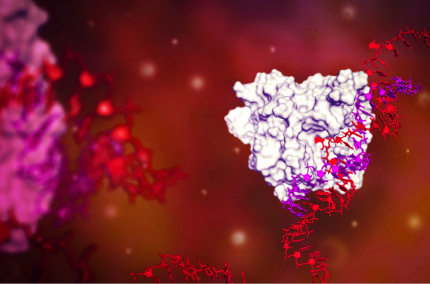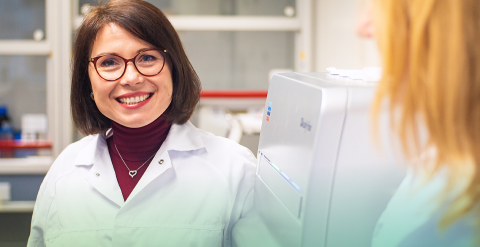Before joining ProQR, Bart Klein was a Dutch and European patent attorney with a Master’s degree in Chemical Biology/Molecular Biology. What is Klein’s connection to RNA therapeutics? “At the end of the 80s, I wrote my master’s thesis about differential splicing of RNA, a biological phenomena that was new back then. Over time, these and other biological insights have led to new therapies based on splice switching, a technology underlying ProQR’s programs in genetic eye and skin diseases, for example. After graduating, I pursued a career as an Intellectual Property (IP) Specialist in life sciences and telecommunications. During my career, I have worked for several start-ups and established enterprises, including Crucell, before joining ProQR.”
“An important milestone came when I met ProQR’s founders in 2012 for a consulting assignment; I was to conduct due diligence for an investor and soon thereafter was asked to advise ProQR in the field of IP. I later joined ProQR and since 2016 I lead the company’s Technology Development department. Coming to ProQR felt as if I had ‘come full circle’ with RNA, after all those years. ProQR is developing oligonucleotide-based therapies targeting several genetic diseases, including ‘splicing diseases’. I find the biology of post-transcriptional gene regulation fascinating, more specifically the oligonucleotide-based technologies that make it possible to interfere with such regulation to cure diseases.”
RNA technology has proven to be a viable path for the development of therapies for underserved rare genetic diseases. How did Axiomer® technology come into play?
“Since the discovery of RNA editing, new findings have led to new technologies. The Axiomer® platform is a great example of this. In 2014, the foundation was laid with the idea to hijack the endogenous RNA editing enzyme ‘ADAR’ in our cells and to redirect it to any target of choice, just using a chemically modified oligonucleotide; after the first successes in the lab we knew we were on to something and built it into what it is today: a new approach to treat rare genetic diseases. And that’s only the start, because treating genetic diseases is not the only application of targeted RNA editing. In fact we can now modulate any RNA at will, changing either the expression of a specific RNA or modulating protein function encoded by it, inside a patient’s own cells, by just using an oligonucleotide as drug modality. Moreover, we do so without messing with a patient’s DNA and avoid the related safety concerns. The establishment of the Axiomer® technology opens up the door to treating disease causing mutations that were untreatable thus far.”
“It most certainly offers new possibilities in RNA modulation, both to ProQR and other companies that believe in the potential of RNA technology. Axiomer® platform can help push current borders, I dare say that it could change the entire playing field!”
That is a bold statement. What potential do you see, compared to, for example, CRISPR?
“CRISPR is another promising new development. It is a new research tool that allows for modification of cells on a DNA level. But it is also a very complex tool. Axiomer® technology is considered to be more elegant and less complex, with less risks involved. Its potential for application is wide, for many different therapeutic areas and genetic diseases. It is estimated that Axiomer® technology can be utilized for at least 20,000 genetic mutations, and that is only according to current knowledge. A lot of progress is being made in identifying mutations, in linking these to diseases and, in the end, in finding therapies for patients. As said before, the technology is not limited to application to genetic mutations. In principle, any change in RNA expression or protein function with benefits for patients can be realized, promising to offer treatments for a wide variety of human diseases, such as age related diseases (think about Alzheimer’s or Parkinson’s disease), forms of cancer and ultimately maybe even infectious diseases. With the Axiomer® platform, we are able to change the localization of proteins that play a key part in health – and change their functionality! We can do that in a much more subtle and sophisticated way than before. We are about to modulate the structure of proteins. On an RNA level, we can also change the quantity of protein. Axiomer® platform is a next step that offers precision we did not have before.”
How will ProQR put Axiomer® platform to work?
“We believe that Axiomer® platform forms the basis for a complete new field of medicine. Going forward we will further build out the platform and intend to transform this scientific breakthrough to generate new therapeutics for patients in need.”
“At the same time, we believe we need to open the window to the world. Axiomer® technology is such a powerful platform for science that we should not limit the use to ProQR only. We therefor plan to collaborate with others in strategic partnerships to enable the entire scientific community that focuses on genetic diseases to benefit from our Axiomer® technology.”
ProQR’s scientists found ways to design synthetic oligonucleotides that will go in to a cell and attract the ADAR enzymes to a particular site on the RNA that they want to change. They can make that change in a very specific and directed way without affecting the DNA.



